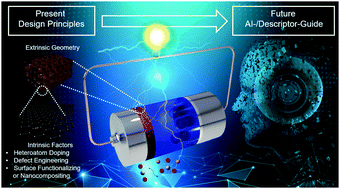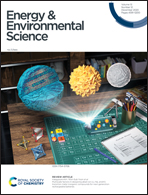Electrocatalyst design for aprotic Li–CO2 batteries
Abstract
Recently, a promising energy storage technology, high energy density rechargeable Li–CO2 batteries, has attracted considerable attention. Li–CO2 batteries are anticipated to mitigate the long-lasting greenhouse effect and simultaneously provide electric power. However, inferior battery performance due to large overpotentials, low cyclability and fast capacity degradation, which are mainly triggered by unsatisfactory electrocatalyst design, still bothers materials scientists. This article reviews the pioneering development of cathode catalysts in terms of corresponding intrinsic and extrinsic factors. Intrinsic factors, herein referring to the electronic structures of a substance and its electronic interactions with the environment, dictate the nature of the ‘building units’ of the material and can often be chemically tuned through strategies like heteroatom doping, defect engineering and surface functionalizing or nanocompositing. Extrinsic factors, referring to the physical geometry of materials, including morphology, porosity, size, etc., also require careful reflection since different geometric arrangements of the same ‘building units’ most likely result in entirely different battery performances. A systematic consideration of both the intrinsic and extrinsic factors is believed to further inspire beautiful designs of electrocatalysts for Li–CO2 batteries as well as other metal–air batteries.



 Please wait while we load your content...
Please wait while we load your content...